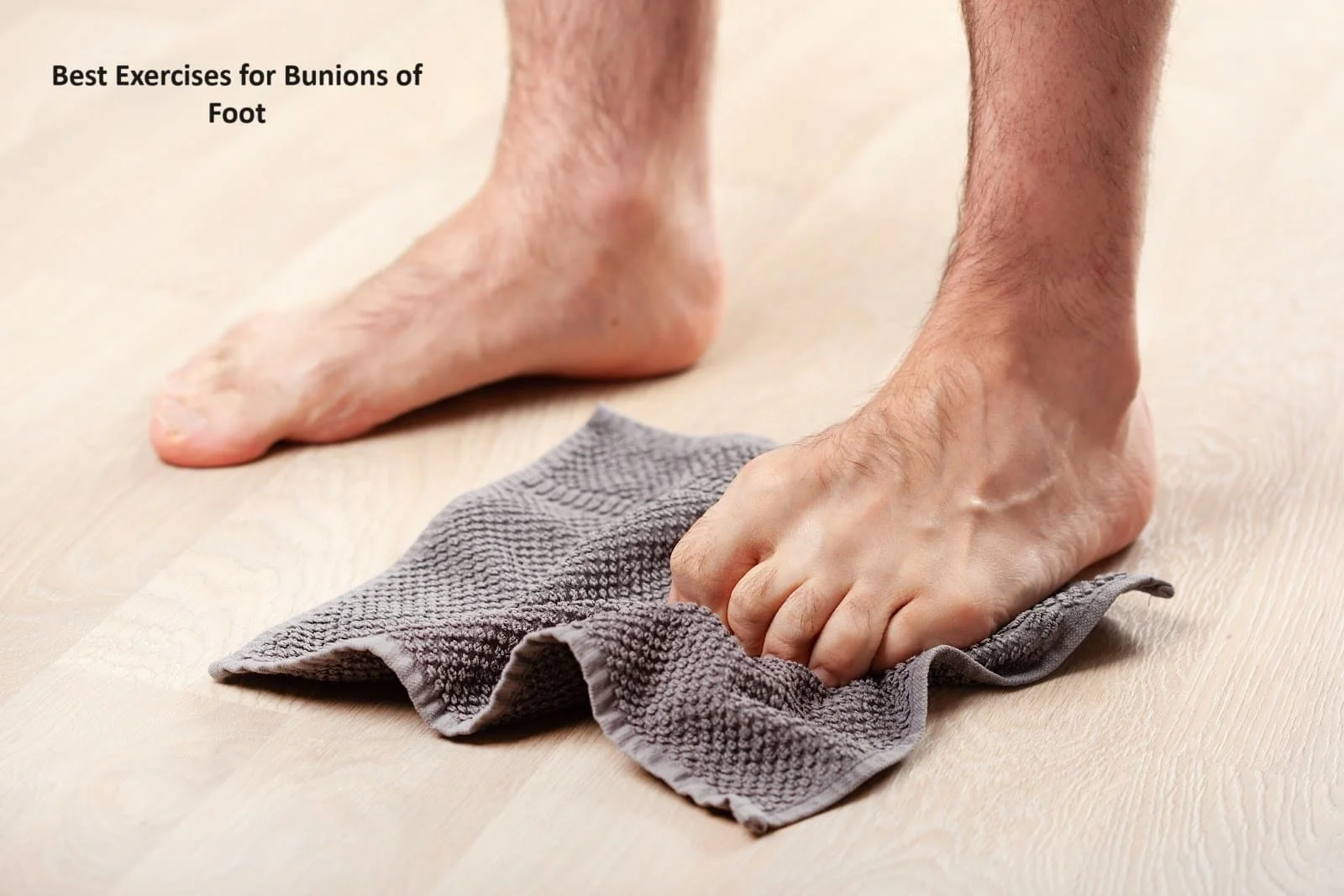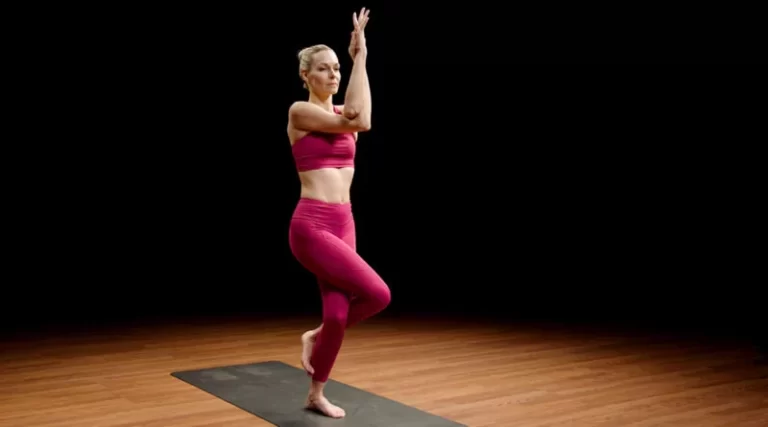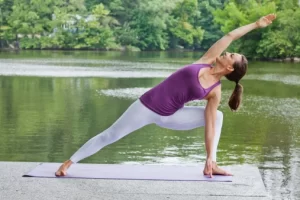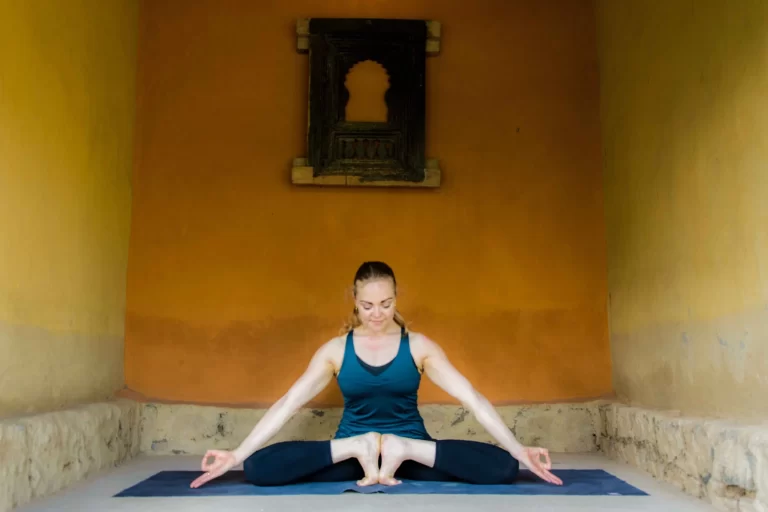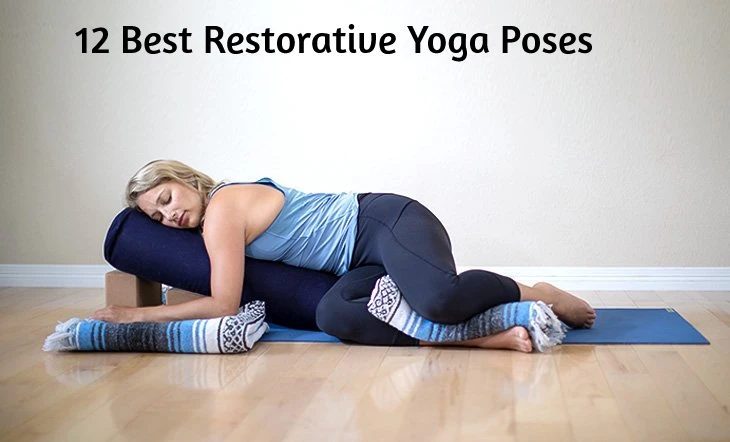22 Best Exercises for Bunions of Foot
Introduction:
Along with painkillers and physical therapy, exercises for bunions are a crucial component of your total treatment plan.
The bunion resembles a lump on the big toe’s side. Actually, the foot bones’ irregularity that caused this lump causes your big toe to not be straight, but to tilt towards your second toe. The bump on your toe is the result of this angle. The bump may not always be painful. However, a bunion will eventually force the toes closer together. This may lead to suffering and a potential for irreversible deformity.
Bunions can cause a lot of pain. They not only make you very uncomfortable, but they also interfere with your favorite activities and disrupt daily activities. Fortunately, there are lifestyle changes and activities you may do to reduce your symptoms and avoid getting bunions again. When you have bunions, foot exercises, and toe stretches can help keep the joint between your big toe and the rest of your foot flexible while also strengthening the muscles that control your big toe.
Bunions can cause a lot of pain. They not only make you very uncomfortable, but they also interfere with your favorite activities and disrupt daily activities. Fortunately, there are lifestyle changes and activities you may do to reduce your symptoms and avoid getting bunions again. When you have bunions, foot exercises, and toe stretches can help keep the joint between your big toe and the rest of your foot flexible while also strengthening the muscles that control your big toe.
In order to avoid a recurrence of a bunion or pain, foot exercises following bunion surgery are actually advised once the healing process is complete.
Exercises for bunions have the following advantages, including:
These are some of the positive effects of frequent physical activity.
- Increases the effectiveness of daily exercise
- Boost your balance or posture.
- Muscle relaxation
- Minimise discomfort
- Become more agile.
- Become more adaptable.
- It helps to strengthen weakened muscles.
- Let go of any tightness or tension.
- You can regain your mobility by exercising.
- Improving coordination.
- Improve your balance.
The best exercises for Bunions are:
You can lessen the symptoms of a bunion by strengthening your foot with the exercises that follow:
Toe points and curls
- Place your feet flat on the ground while sitting up straight on a chair.
- Maintain the toes on the ground while lifting the heels.
- Stop when your feet are barely off the surface of the ground.
- Before letting go, hold the heels in place for 5 seconds.
- During the second phase, only the tips of the big and second toes should make contact with the ground.
- Raise the heels and flex the toes to do this.
- Before lowering, hold for 5 seconds.
- Raise the heels during the third stage and tuck your toes so that only the tips of your toes are in contact with the ground.
- For five seconds, maintain this posture.
- Then take a position that is neutral.
- Then relax.
- Do it with the opposite foot.
- Repeat each cycle 5–10 times to increase flexibility and mobility.

Toe Pull
- Begins by sitting down in a chair or bed.
- Leg raised in front of you.
- You can use a resistance band for strengthening.
- As much as you can, extend your toes up to your body.
- Hold for a short while.
- After that, adopt a neutral stance.
- Then unwind.
- Replicate with the other foot.
- Repeat daily 5–10 times.
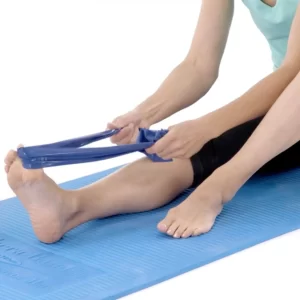
Toe spread-outs
- Sit in a chair with a straight back and place your feet firmly on the ground.
- As widely apart as you can without straining, spread your toes.
- For five seconds, maintain this posture.
- Then take a position that is neutral.
- Then relax.
- Repeat with the opposite foot.
- When one is sufficiently strong, one can try wrapping a rubber band around their toes.
- Adding resistance, will up the difficulty of the activity.
- Repeat this exercise five to ten times every day.
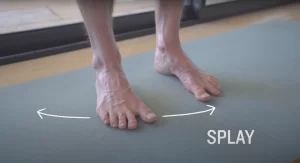
Toe Salutes
- Sit down in a chair with your feet level on the ground.
- Lift your big toe, keeping your other four toes firmly on the ground.
- Hold the posture for a short while.
- Return to your neutral position after that.
- Then unwind.
- Raise all four of your toes simultaneously while keeping your big toe firmly planted on the ground.
- Hold the posture for a short while.
- Return to your neutral position after that.
- Then unwind.
- Repeat 5–10 times each day.
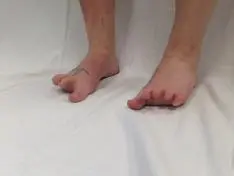
Ankle pumps
- Your toe joints are moved about as a result, which helps to ease stiffness.
- Sit on the ground or bed.
- 20 times in clockwise circles, starting with the foot.
- Then take a position that is neutral.
- Then unwind.
- After stopping, make 20 more circles going the opposite way.
- Repeat with the opposite foot.
- Five to ten times a day, do this exercise.
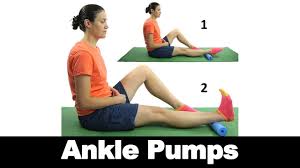
Assisted toe abduction with an exercise band
- Start with a comfortable seated position.
- Your big toes should be wrapped with an exercise band.
- Pull the big toes apart using a small workout band while keeping it taut.
- When completely extended, hold for a short period of time before releasing.
- Then take a position that is neutral.
- Then relax.
- Repeat with the opposite foot.
- Five to ten times a day, do this exercise.
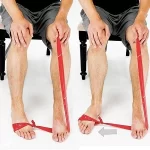
Ball roll
- Reach your toes as high as you can towards your body.
- Place your foot on a tennis or golf lacrosse ball that is lying on the surface of the ground.
- Rock your foot back and forth over the ball.
- For 3 to 5 minutes, do this on each foot.
- Then take a position that is neutral.
- Then relax.
- Repeat with the opposite foot.
- Practice this exercise five to ten times per day.
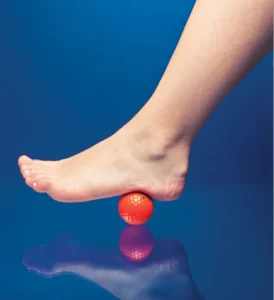
Marble pickup
- During this activity, you will require a bowl and 10 to 20 marbles.
- Place the marbles on the ground and the bowl nearby.
- Sit down with your feet closest to the surface of the ground.
- Use your toes, pick up each stone, and place it in a basin.
- Keep your toe firmly wrapped around the marble.
- Then take a position that is neutral.
- Then relax.
- Repeat with the opposite foot.
- Practice this exercise five to ten times per day.
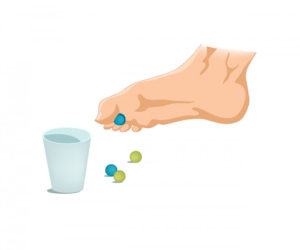
Heel raise
- Plant your foot gently on the surface of the floor.
- Elevate your heel and put most of your weight on the outside of your feet.
- For five seconds, maintain this posture.
- Then get back on the ground.
- Then take a position that is neutral.
- Then relax.
- Repeat on each foot 5 to 10 times.
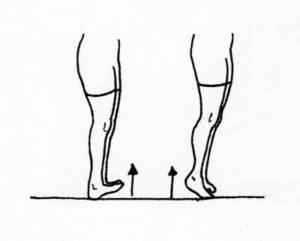
Toe extension
- Rest back in a chair with a straight back, your feet flat on the floor.
- Put one foot on your opposite thigh after picking it up.
- When you feel a stretch along the sole of your foot and in the heel cord, grab your toes with one hand and pull them up towards your ankle.
- As you stretch, use your other hand to massage the arch of your foot.
- Ten seconds of holding.
- After that, go back to your neutral position.
- Then unwind.
- Ten times each foot, repeat.
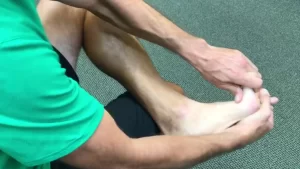
Towel Grip and Pull
- Beginning by taking up a comfortable seated position on the surface of the ground.
- A little towel should be placed on the ground in front of the torso with the short side facing the feet.
- The toes of one foot should be on the short side of the towel.
- Grab the towel between the toes and try to pull it towards you.
- For a little while, maintain that angle for your body.
- Then adopt an impartial stance.
- Then relax.
- Repeat with the other leg.
- Do for each foot 5 to 10 times.
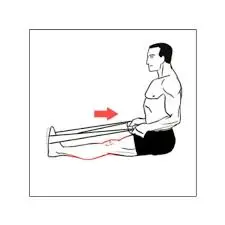
Ankle Stretch
- First, take a seat in the chair.
- Maintain a flat foot on the ground.
- Lift your foot off the ground if you can.
- Bring your toes in close to you.
- Now tuck your toes under and point them at the floor.
- Return to your neutral pause after that.
- Then relax.
- 10 times each on each ankle.
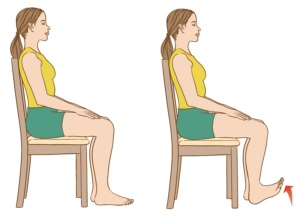
Toe Flexing and Contracting
- Start by taking it easy while facing the wall.
- You might try to push it away by digging your toes into the wall.
- A muscle contraction should be sensed in your calves.
- Hold for a short while.
- After that, revert to your neutral position.
- Then relax.
- The other leg, and repeat.
- Repeat five to ten times daily.
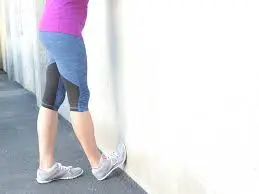
Calf Stretch Off A Step
- Standing with your knee straight on the edge of a step
- When you feel a stretch on the back of your lower shin, gradually drop your heel.
- Sustain this stance for a few moments.
- After that, revert to your neutral position.
- Then relax.
- The other leg, and repeat.
- Repeat daily 5–10 times.

Soleus Stretch Off A Step
To do soleus stretch:
- With your heels dangling over the edge of the step, stand there.
- Kneel down a little and plant your heels.
- This stretch will be felt around the tendon in the back of your heel.
- For a brief while, maintain this posture.
- After that, revert to your neutral position.
- Then unwind.
- Repeat daily 5–10 times.

Plantar fascia stretch
- Sitting on a chair, cross your right ankle directly over the knee of your left leg.
- Your right hand should be used to gently draw your toes back into the front of your ankle.
- Keep this in mind for a little period.
- Then take a position that is neutral.
- Then unwind.
- Repeat with the opposite leg after that.
- Repeat every day between 5 and 10 times.
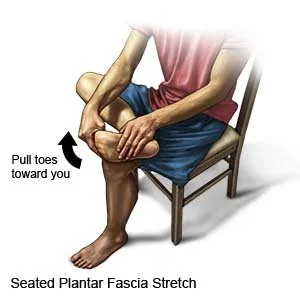
Single Leg Balance for Bunion Pain
- Start with standing on one leg.
- Raise yourself up on your toes using a chair or wall support.
- Hold for a short while.
- Then gradually lower.
- After that, revert to your neutral position.
- Then unwind.
- Repeat every day between 5 and 10 times.

Big Toe Stretch
- Place your feet flat on the ground while sitting up straight on a chair.
- Set the left foot on the right thigh.
- Use your fingers to gently extend the big toe up, down, and to the side.
- With the big toe, maintain each position for five seconds.
- After that, revert to your neutral position.
- Then unwind.
- Repeat every day between 5 and 10 times.
- Put the other foot down and repeat.
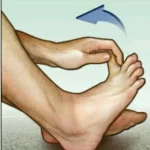
Sand walking
- Go somewhere with sand, like a beach, a desert, a volleyball court, or anything else.
- Take off your socks and shoes.
- As much as you can, stroll.
- To avoid overworking the muscles in your feet and calves, try gradually increasing the distance.
- Then unwind.
- Minimum 10–20 times of walking.
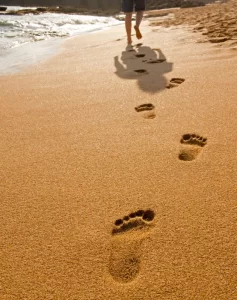
Achille stretch
- Stand with your back to the wall and your arms at your sides.
- Make sure both of your feet are directly in line with the wall to avoid your foot from being flat and to maintain a straight heel bone.
- Onto the outside of your foot, roll a little.
- Flex the upper knee while keeping the back knee straight.
- Make sure you keep the rear heel in contact with the ground.
- Back leg calf muscles ought to feel stretched.
- Continue that position for a few seconds.
- Even though you should feel the stretch, ineffective workouts result if it hurts.
- If it hurts, try to avoid extending the back leg too far.
- It should feel tight in the back leg’s calf muscles.
- After that, revert to your neutral position.
- Now relax.
- The other leg, and repeat.
- Repeat every day between 5 and 10 times.

Toe curl
- Seat down on the floor with your feet firmly placed.
- Next, curl your toes under the towel (optional) you are holding in both hands.
- For a little while, maintain the same position.
- Then take a position that is neutral.
- Then relax.
- Repeat with the other leg.
- Repeat daily 5–10 times.

Banded toe raise
- Began by taking a comfortable seat at the table or on a chair.
- With the leg of a table or chair or your other foot, create a loop out of a piece of elastic exercise band.
- Put one foot into the loop.
- Turn your toes outward while maintaining your heel firmly planted on the floor.
- For a little while, maintain the same position.
- Slowly return your foot to its starting place.
- Then relax.
- Build up to performing this repetition 5-10 times.
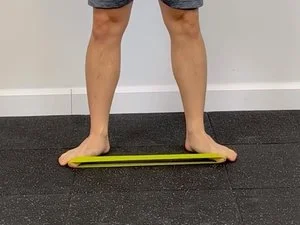
Which safety measures are necessary when exercising?
- Between exercises, rest.
- Bend and stretch a little.
- If your discomfort worsens, cease right away.
- Maintain a straight spine while exercising.
- To comfortably complete the easy exercise.
When should you avoid doing the exercise?
- Burns my muscles terribly.
- Joint swelling or discomfort.
- You’re contagious.
- If there is any discomfort or numbness.
- Headache and Fever
- Exercise can be stopped if it hurts.
To maintain the health and strength of the feet:
- Before exercising, go through a complete warm-up program.
- When participating in sports and daily activities, wear supportive footwear.
- Replace worn-out footwear as soon as you can.
- To condition the feet and ankles, gradually increase your strength and flexibility.
- Particularly when running, stay away from uneven surfaces.
- Avoid running uphill too frequently.
- Take note of your body.
- Limit your activity intake.
- Rest and get the right care to avoid an injury from happening again.
FAQs
Does physical activity cure bunions?
Physical therapy exercises, for example, can assist in reducing the advancement of your bunion.
Always begin with a basic course of treatment.
Does exercise prevent bunions?
You can also attempt a number of foot exercises to strengthen your feet and lower your risk of getting bunions and foot pain. These exercises include arch tilts, ankle and toe inversions, heel rises, toe raises, toe curls, toe extensions, and toe raises.
eversions
Exactly how frequently should you perform exercises for bunions?
These barefoot exercises should ideally be done for 10 to 20 minutes each day.
Although it can seem like a lot, you’ll probably find that the pleasure these motions provide is well worth the minimal effort they call for.
The way can my bunions be treated naturally?
Put ice on the bunion while it is wrapped in a thin cloth.
Therapeutic massage your entire foot.
Shoes can be widened to accommodate bunions.
Keep your weight at a healthy level.
whenever you can, lift the foot.
What worsens bunions?
All day standing. Standing on your feet all day is a guaranteed way to aggravate your bunion. Walking or running a marathon is the worst thing you can do for your bunion, and if your profession requires you to be constantly on your toes, you may need to take some time off.
What is the greatest exercise for bunions?
Toe circles
Assisted toe abduction with an exercise band
Ball roll
Towel grip and pull
Marble pickup
Figure eight rotation
Barefoot beach walking
What is the most effective strategy to avoid bunions?
To minimize bunions and their repercussions, avoid tight shoes and opt for models that fit your foot. Choose shoes with wide insteps and soft soles, and avoid sharply pointed shoes.
Is physiotherapy beneficial for bunions?
Many people’s bunion deformities deteriorate over time, and you can start to have mobility problems as well as increased pain on the side of the bump. Physiotherapy can assist to enhance function and lessen bunions-related pain.
How should a bunion on your foot be treated?
Start with self-care, if you have it. Wear wider shoes, put gel padding around your bunion, and apply arch support inserts. Ice your bunion several times a day to minimize swelling if it becomes painful or irritated. Consult a foot doctor if your discomfort worsens or your walking becomes shaky.

